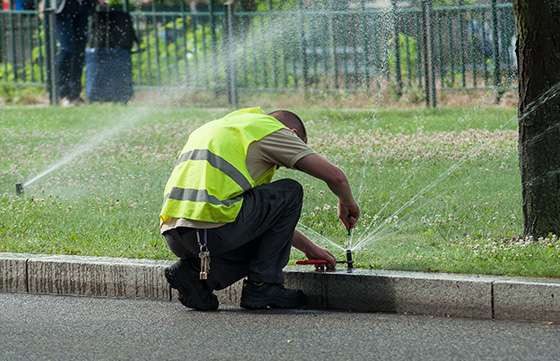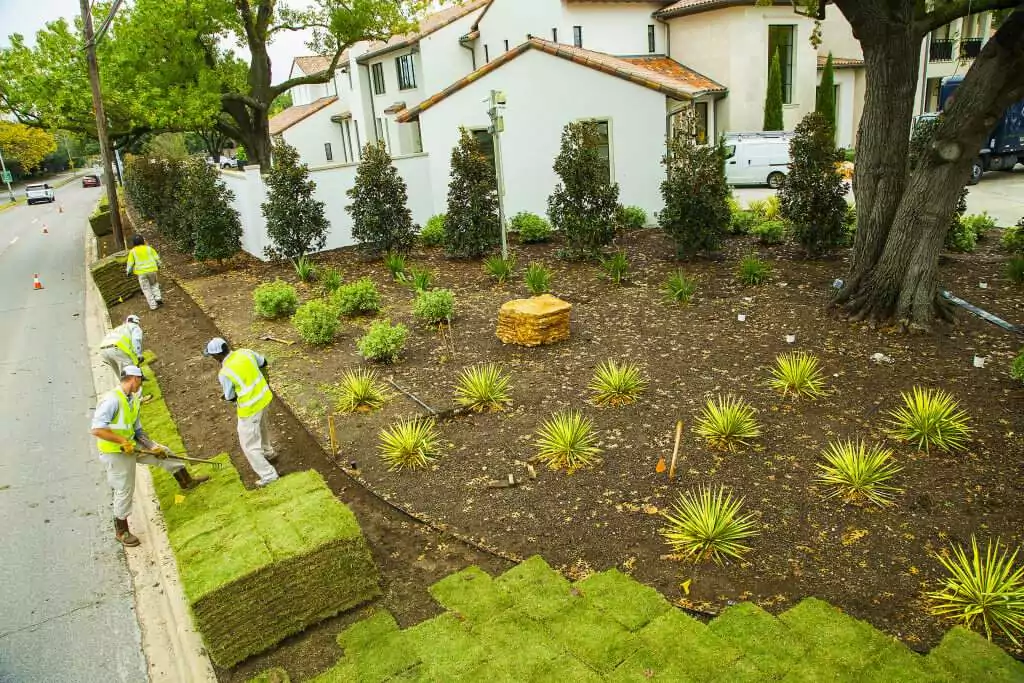A Comprehensive Guide to Installing a Lawn Drainage System in Dallas
If you have a luxury lawn in Dallas, having proper drainage system in place can help prevent flooding and soil erosion and ensure your lawn is in its best shape. However, unless you’re a professional, determining how and when to install a lawn drainage system can be difficult. That’s why the team from The Plant Concierge is here to help!
Here we’ve collected everything you need to know about how and when to install a lawn drainage system in Dallas.
Signs You’re in Need of a Drainage System
There are some clear signs that you’re in need of a drainage system, such as water pooling in the yard, soggy soil, the presence of moss or mildew growth, or reeds growing on the lawn. Poor drainage can be caused by a number of things including:
- Mixing subsoil and topsoil
- Having a property built upon clay soil that retains water
- When your property sits at a lower elevation than your neighbors
- When your lawn/garden has an uneven surface level
- If there are underground springs or you have continuous rainfall in your area

4 Most Common Types of Drainage System
1. Traditional Drainage System
The simplest drainage system is the traditional drainage ditch, usually sitting approximately 35 inches deep. It can be easily installed with trenching equipment. If digging your own drainage ditches, be sure that they also have sloping sides to divert excess surface water away from your lawn.
2. French Drainage System
A French drainage ditch uses the sloped traditional drainage ditch but goes one step further. To install your own French drainage system, you’ll need to first dig a sloped trench like the one above, then line it with landscape fabric and gravel. Then cover the ditch evenly afterward.
3. Herringbone Drainage System
Much like a French drain, a herringbone drainage system utilizes a sloping trench but has other trenches that branch off the main one to enhance drainage. This is why it’s referred to as a “herringbone” drainage system because it creates a familiar herringbone pattern. To install one, the main trench needs to begin at the highest elevation on your property and end at the lowest. The side trenches of the system need to join the main trench at precisely a 45-degree angle and be spaced anywhere from 9-20 feet apart depending on your soil type. Line the trenches with landscape fabric and gravel like a French drain.

4. Piped Drainage Systems
One of the most popular, albeit costlier drainage systems, is piped drains. The installation process for installing drainage pipes is much like the ones mentioned above, however, with the addition of corrugated drainage pipes. For uneven yards where water pools in multiple places, piped drainage systems are probably your best option.
Other Ways to Enhance Lawn Drainage
In addition to installing comprehensive drainage systems, there are some other, simpler ways you can combat a poorly draining yard such as investing in a rain barrel or rainwater collection system to minimize the amount of water that drains into your yard from the gutters. Additionally, you can also invest in landscaping services that will add plants that help improve drainage depending upon your soil type.
Installing Artificial Turf to Improve Drainage
For those with serious drainage issues, you may want to consider artificial turf installation, especially if other alternatives haven’t worked in the past. There are a variety of benefits to artificial turf when compared with regular turf including:

- Minimal Pests
With artificial turf, you won’t have the same pest problems as with a traditional yard because it’s much more difficult for them to find a home. Better drainage means fewer pests, especially mosquitos, making your backyard a much more pleasant place to relax.
- No Standing Water
Artificial turf eliminates the problem of standing water, meaning less mugginess in your yard, no soil erosion, and a safer lawn with no slick spots. It can be the perfect play area for children and pets, or simply to lounge on sunny days.
- Increased Water Conservation
Since artificial turf offers improved drainage, you’ll be allowing excess water to return to the local aquifer rather than pooling in your yard and evaporating. Additionally, you don’t need to water an artificial lawn, making it a perfect way to conserve water in more drought-prone areas like Dallas.
Contact us for more about lawn drainage system and artificial turf installation!
Our Dallas experts can enhance the drainage of your luxury property with our concierge-level lawn care and Dallas landscaping services. To learn more about what we do contact us online today or call (972) 243-1455 for a FREE quote!


